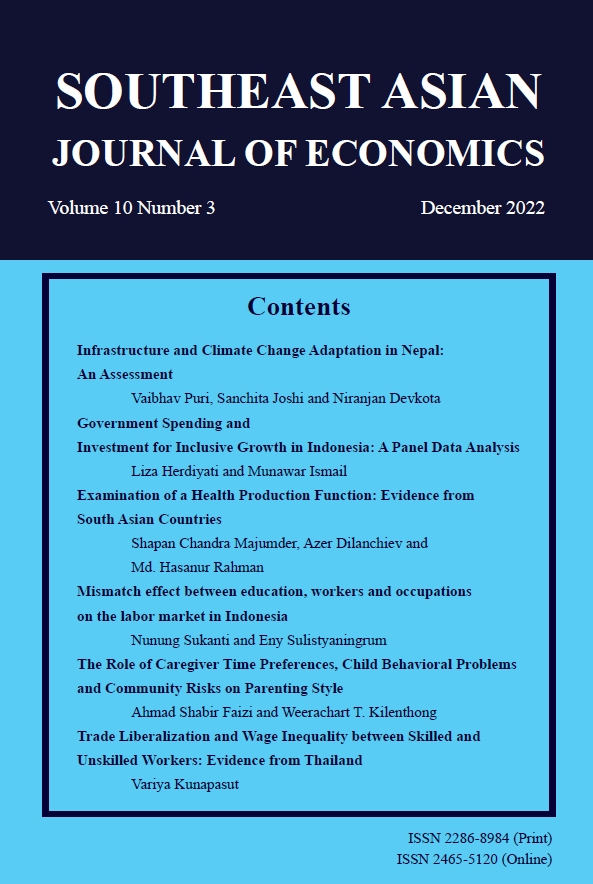Twin Deficit Hypothesis in Indonesia: A General Equilibrium Approach and Non-Linear Specification
Keywords:
Twin Deficit, Indonesia, NARDLAbstract
The twin deficit problem has been persistent in Indonesia. As Indonesia builds new infrastructure and encourages economic growth, its twin deficit could generate external imbalance and heightened economic risk. This study aims to revisit the twin deficit hypothesis for Indonesia by using the Non-Linear Autoregressive Distributed Lag (NARDL), deriving the empirical model from the general equilibrium perspective, to highlight the different responses of the current account due to fiscal balance changes. Employing the annual dataset from 1986 to 2020, this study finds that the twin deficit is present in the long run, while in the short run, twin divergence is evident. Therefore, a reduction of the fiscal deficit is necessary to reduce the current account deficit in the long run. Moreover, a more restrictive import policy and a more supportive export policy are essential to improve the current account balance in the short run.
Downloads
Published
How to Cite
Issue
Section
License

This work is licensed under a Creative Commons Attribution-NonCommercial-NoDerivatives 4.0 International License.
The submission of a manuscript implies that the paper is an original work and has not been published elsewhere. The author(s) authorize the journal to reproduce or distribute the paper in printed or other electronic forms.







